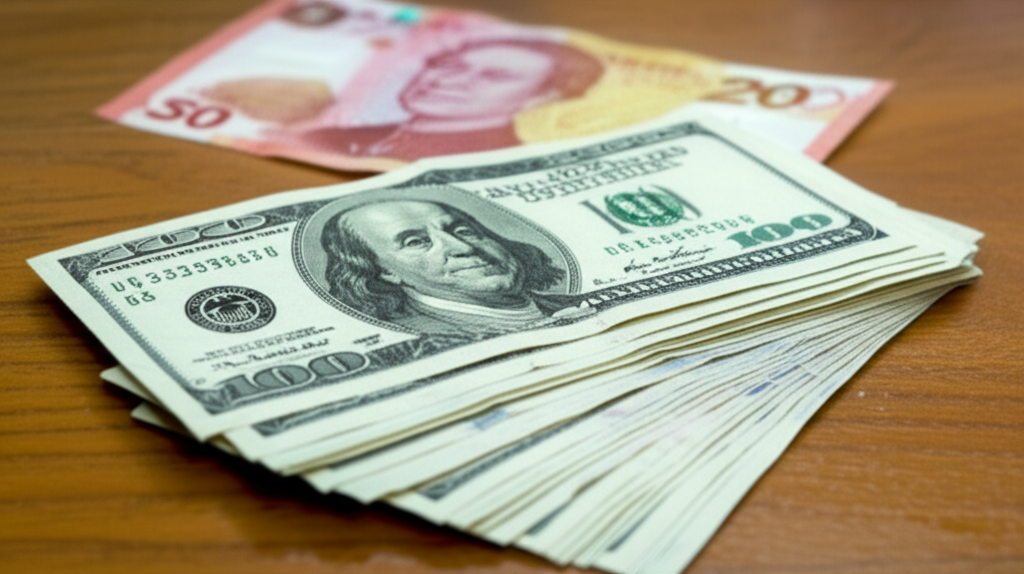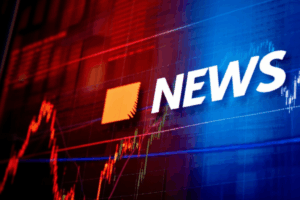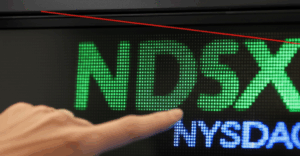US Dollar Rebounds Ahead of BoC Rate Decision and Trump-Xi Call Hopes
The US dollar is experiencing a noticeable rebound in currency markets, drawing strength from a confluence of factors including its enduring appeal as a safe haven and speculative positioning ahead of key upcoming events. Traders and investors are keenly observing two major catalysts that could dictate the greenback’s near-term trajectory: the highly anticipated interest rate decision from the Bank of Canada (BoC) and the speculative hopes surrounding a potential phone call between former President Donald Trump and Chinese President Xi Jinping. This intertwining of monetary policy and geopolitical developments creates a dynamic environment for the global reserve currency, particularly relevant for young adults navigating the complexities of modern financial markets.
The dollar’s recent upward movement follows a period of consolidation, highlighting its fundamental resilience even amidst shifting global economic narratives. Its strength is often underpinned by robust US economic data, which frequently outperforms that of other developed nations, and by the Federal Reserve’s comparatively cautious stance on future rate cuts. Higher US Treasury yields, driven by expectations of persistent inflation or a stronger economy, also tend to make dollar-denominated assets more attractive, drawing in capital and boosting the currency. In times of uncertainty, the dollar traditionally acts as a sanctuary, and the current global landscape, riddled with geopolitical tensions and uneven economic recoveries, continues to foster this demand. For those tracking foreign exchange, understanding these underlying currents is crucial; the dollar isn’t just a currency, but a barometer of global confidence and risk appetite.
Much of the immediate focus, however, is firmly fixed on Ottawa, where the Bank of Canada is poised to announce its latest monetary policy decision. Market participants are divided on whether the BoC will opt for another interest rate hike, maintain the status quo, or perhaps even signal a future pivot. Canada’s inflation remains elevated, but recent economic indicators have shown signs of cooling, creating a delicate balancing act for policymakers. A hawkish stance by the BoC – indicating further rate increases or a longer period of high rates – would likely strengthen the Canadian dollar against its US counterpart, potentially dampening the USD/CAD pair. Conversely, a more dovish tone, suggesting a pause or an earlier pivot towards rate cuts, could see the loonie weaken considerably, thereby giving the US dollar additional impetus. The BoC’s communication around its economic outlook and inflation projections will be scrutinized for clues, offering a prime example of how central bank actions directly influence currency valuations.
Adding another layer of intrigue and volatility is the growing chatter surrounding a potential phone call between former President Trump and Chinese President Xi Jinping. While details remain scarce and the prospect itself speculative, the mere hope of such a high-level dialogue sends ripples through financial markets. During his presidency, Trump initiated significant trade tensions with China, leading to tariffs and considerable global economic uncertainty. Any indication of renewed engagement, especially involving a figure with Trump’s historical approach to international trade, could be interpreted in myriad ways. A constructive call suggesting a de-escalation of trade disputes or the resumption of high-level economic talks could significantly boost global risk sentiment, potentially weakening the safe-haven dollar as investors shift towards riskier assets. However, if the “hopes” are dashed, or if the call itself yields negative outcomes, it could reignite trade anxieties, prompting a flight to safety and bolstering the dollar’s value. This situation underscores how geopolitical developments, even those based on unconfirmed speculation, can exert a profound influence on currency markets, demanding vigilance from informed investors.
In essence, the US dollar’s current rebound is a testament to the dynamic interplay of monetary policy expectations and geopolitical undercurrents. The Bank of Canada’s decision will directly influence North American currency dynamics, while the lingering potential of a Trump-Xi interaction continues to inject an element of geopolitical uncertainty into the global economic outlook. For young adults keen on financial markets, these events serve as powerful reminders that macroeconomics and international relations are not abstract concepts but tangible forces shaping daily market movements. Staying informed about central bank pronouncements and major geopolitical developments is not merely an academic exercise but a practical necessity for understanding and navigating the ever-evolving landscape of global finance. The coming days promise to be eventful, offering fresh insights into the dollar’s enduring role and the delicate balance of forces that determine its strength.





